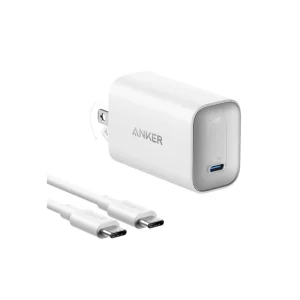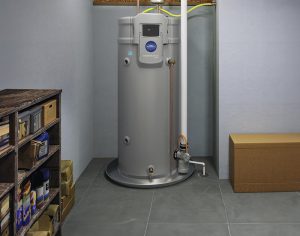Wireless Charger: What It Does, How It Works, Applications, and Safe Usage Tips

Version 1.0.0
Wireless chargers have revolutionized the way we power our electronic devices, providing convenience and reducing the clutter of tangled cords. In this article, we’ll explore what a wireless charger is, how it works, its common uses, and essential safety guidelines for its use.
1. What Is a Wireless Charger? (Introduction, Common Types, and Uses)
A wireless charger is a device that allows you to charge your electronic gadgets without the need for physical cables or connectors. This technology relies on electromagnetic fields to transfer energy between a charging pad and a compatible device. Wireless chargers have become increasingly popular due to their convenience, eliminating the need for multiple charging cables and offering a more streamlined charging experience.
Common Types of Wireless Chargers:
- Qi Wireless Charger: The most widely adopted wireless charging standard, used by smartphones, tablets, and other devices. It uses electromagnetic induction to transfer power from the charging pad to the device.
- Inductive Charging Pads: These chargers use electromagnetic fields to transfer energy to the device. They are often found in portable charging pads or docking stations.
- Magnetic Charging: Some newer devices, especially Apple’s iPhone and MagSafe accessories, use magnetic alignment to ensure the device is placed correctly on the charger for optimal charging efficiency.
- Stand Wireless Chargers: These are designed with a stand that props up your device while charging, allowing you to use the device more comfortably while it charges.
Uses of Wireless Chargers:
- Smartphones: The primary application of wireless charging is for smartphones, where users can simply place their phones on the charging pad to power up without needing to plug in cables.
- Wearables: Many smartwatches and fitness trackers also support wireless charging, providing a hassle-free way to charge them overnight.
- Headphones and Earbuds: Wireless charging is often used for wireless earbuds and headphones, offering users a tangle-free charging experience.
- Other Devices: Some newer laptops, electric toothbrushes, and other gadgets have incorporated wireless charging capabilities as well.
2. How Does a Wireless Charger Work? (Principle of Operation and Key Components)
Wireless chargers use electromagnetic induction or resonant inductive coupling to transfer energy from the charging base to the device. The process involves converting electrical energy into a magnetic field, which is then transferred to the receiver coil inside the device being charged.
Key Components of a Wireless Charger:
- Transmitter Coil (Charging Pad): This is the coil inside the wireless charging pad or station. It generates an electromagnetic field when electric current passes through it.
- Receiver Coil (Device): Inside the device being charged (such as a phone or watch), there is a receiver coil that captures the electromagnetic field and converts it back into electrical energy to charge the device.
- Rectifier Circuit: This component is found in both the charging pad and the device, converting the alternating current (AC) to direct current (DC), which is what charges the battery.
- Inductive Coupling: The alignment of the transmitter and receiver coils ensures that the electromagnetic field is efficiently transferred between the charger and the device.
How It Works:
- Electromagnetic Field Generation: The transmitter coil in the wireless charger creates an electromagnetic field when powered on.
- Energy Transfer: The electromagnetic field travels through the air to the receiver coil in the device.
- Power Conversion: The receiver coil inside the device converts the energy back into direct current (DC) electricity, which charges the battery.
This process eliminates the need for physical connectors, making it more convenient for users to charge their devices by simply placing them on the pad.
3. Where Is a Wireless Charger Used? (Practical Applications)
Wireless chargers are used in a wide variety of scenarios, providing a versatile and easy way to charge devices. Their applications range from home use to commercial settings.
Common Applications:
- Home Charging Stations: Wireless chargers are often placed on desks, bedside tables, or living room tables for convenient charging of smartphones, smartwatches, and other devices.
- Offices: In offices, wireless chargers are commonly used to charge devices without the clutter of cables. Some desks even feature built-in wireless charging pads.
- Cars: Many modern cars now come equipped with built-in wireless charging pads for phones, allowing drivers to charge their devices without worrying about cables while on the go.
- Public Spaces: Public places like airports, cafes, and hotels are increasingly offering wireless charging stations for travelers and customers to charge their phones and devices.
- Travel: Portable wireless chargers and charging docks are ideal for travel, providing on-the-go power without the need for multiple cables.
4. How to Use a Wireless Charger Safely (Safety Guidelines and Key Considerations)
While wireless chargers are designed for convenience, it’s essential to use them properly to ensure safety and optimal performance.
Safety Tips for Using Wireless Chargers:
- Use Certified Chargers: Always use wireless chargers that are certified by reputable organizations, such as the Qi certification, to ensure safety and efficiency.
- Avoid Overheating: Ensure that the charging pad and the device are not overheating during charging. Overheating can cause damage to the device and the battery.
- Proper Placement: Make sure your device is properly aligned with the wireless charging pad. Misalignment can reduce charging efficiency or prevent charging altogether.
- Don’t Use with Cases: Some thick phone cases can interfere with wireless charging. It’s best to remove the case or ensure it’s compatible with wireless charging.
- Avoid Water or Moisture: Never use a wireless charger near water or in damp environments to prevent electrical hazards. Keep the charging pad dry at all times.
- Unplug When Not in Use: To save energy and ensure the safety of the charging device, unplug the wireless charger when not in use.
Conclusion
Wireless chargers are an innovative and convenient solution for charging a variety of devices without the hassle of wires. Understanding how they work, where they can be used, and how to use them safely ensures that you get the most out of this technology. By following proper usage guidelines, you can enjoy a hassle-free charging experience while keeping your devices and charging equipment safe. Whether at home, in the office, or on the go, wireless chargers are a game-changer for modern technology users.







